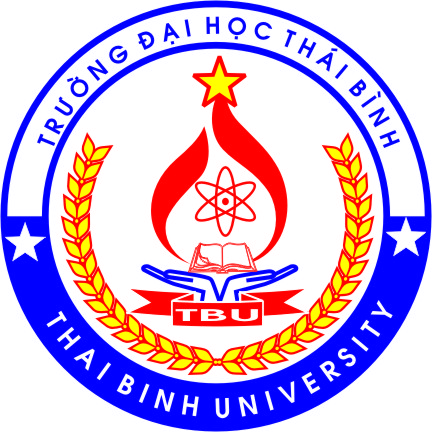Việc làm cho sinh viên Đại học Thái Bình
Tổng hợp việc làm cho sinh viên Đại học Thái Bình theo ngành nghề. Nơi sinh viên tìm việc phù hợp và định hướng nghề nghiệp.
- Ngày hết hạn: 20/03/2026
- Ngành nghề: Tài chính / Kế toán / Ngân hàng
-
Khu vực làm việc:
 Thỏa thuận
Thỏa thuận
Chịu trách nhiệm tham gia xây dựng, giám sát và chủ động có các phương án, đề xuất điều tiết huy động vốn và sử dụng vốn cho toàn hàng trên cả TT1 và TT2 (bao gồm nhưng không giới hạn việc lập kế hoạch huy động vốn (funding plan), điều tiết huy động và sử dụng vốn trên TT2, xây dựng chính sách và điều hành LS điều chuyển vốn nội bộ, lập kế hoạch funding TT1, điều tiết tín dụng và phân phối TPDN..) nhằm đảm bảo tuân thủ các chỉ số an toàn tài chính của NHNN và cam kết với đối tác, góp phần tối ưu hiệu quả bảng cân đối nhằm đạt được các mục tiêu của VPBank.1. Xây dựng kế hoạch huy động vốn định kỳ hàng quý hoặc khi có yêu cầu từ ban lãnh đạo (Funding plan), điều tiết huy động & sử dụng vốn trên TT2 và các tỷ lệ an toàn tài chính, chủ động đề xuất lên Trưởng Phòng các phương án/ hành động cụ thể:- Thực hiện kiểm soát tuân thủ các giới hạn an toàn theo quy định của NHNN, cam kết với các đối tác, tổ chức xếp hạng và khẩu vị rủi ro của ngân hàng;- Theo dõi những biến động về lãi suất và thanh khoản trên thị trường liên ngân hàng, từ đó có những đề xuất điều chỉnh nhanh chóng và phù hợp;- Thực hiện công việc Tối ưu hóa hiệu quả toàn hàng và cân đối với mục tiêu của các Khối KD - Đề xuất các phương án cần thiết nhằm điều tiết các tỷ lệ về ngưỡng tối ưu theo mục tiêu của ALCO trong từng giai đoạn - Phối hợp chặt chẽ với các bộ phận liên quan để có thể đa dạng hóa các nguồn funding sử dụng trong ngân hàng để luôn chủ động về funding;- Tối ưu sử dụng nguồn vốn interbank có chi phí thấp hơn- Đề xuất về các hạn mức tài sản có để tạm thời sử dụng nguồn tiền nhàn rỗi trong từng thời kỳ2. Xây dựng chính sách và điều hành LS ĐCV nội bộ:- Đầu mối xây dựng, cập nhật, các chính sách liên quan đến chính sách giá nội bộ điều chuyển vốn nội bộ (FTP); - Phối hợp với các bộ phận liên quan để rà soát và đề xuất với ALCO những thay đổi về chính sách giá trong từng thời kỳ- Triển khai và kiểm soát các chính sách điều chuyển vốn nội bộ (FTP) trên các hệ thống tính toán điều chuyển vốn FTP - Đề xuất điều chỉnh/ thay đổi chính sách ĐCV linh hoạt, phù hợp trong từng điều kiện hoàn cảnh diễn biến của thị trường- Ước tính các ảnh hưởng của việc thay đổi LS ĐCV lên quy mô bảng cân đối, các chỉ số điều hành và lợi nhuận của Ngân hàng, để từ đó đề xuất những quyết định phù hợp;3. Lập kế hoạch funding TT1, đề xuất và triển khai các chiến lược funding nhằm tối ưu hóa chi phí vốn cho Ngân hàng & điều tiết huy động khách hàng:- Phân bổ quy mô huy động theo mục tiêu của ALCO cho từng khối KD- Phối hợp chặt chẽ với các bộ phận liên quan để kịp thời thúc đẩy các chương trình sản phẩm đem lại CASA cho Ngân hàng- Đề xuất trong việc tái cấu trúc lại các nhóm kỳ hạn, hướng KH đến các kỳ hạn mục tiêu tối ưu theo diễn biến lãi suất trong từng thời kỳ.4. Điều tiết tín dụng & phân phối TPDN nhằm đảm bảo sử dụng room tối ưu và hiệu quả nhất:- Phân bổ hạn mức TTTD cho từng khối KD và theo một số CTSP đặc thù- Sử dụng hiệu quả, tối ưu room TTTD trong từng thời kỳ- Kiểm soát room TTTD và thực hiện các biện pháp nhằm nới room để ưu tiên hơn với những khoản vay có hiệu quả tốt hơn;- Điều tiết phát hành, đầu tư và phân phối TPDN- Phối hợp, trao đổi về các phương án phân chia NIM giữa các ĐVKD5. Chịu trách nhiệm toàn bộ về mặt nghiệp vụ với các dự án về ALM FTP mà phòng có vai trò chủ trì và tham gia các dự án khác (nếu phòng đóng vai trò thành viên), góp phần tự động hóa tối đa quy trình xử lý, từ đó nhanh chóng có các phân tích và đề xuất tham mưu lên ban lãnh đạo6. Phối hợp giữa tất cả các team khác thực hiện:- Tham gia lập kế hoạch, xây dựng và giám sát kế hoạch huy động & sử dụng Vốn cho cả ngân hàng (tăng, giảm, biến động bất thường, ảnh hưởng của nền kinh tế và chính trị, chính sách điều hành của NHNN…tác động trực tiếp đến BCĐ của VPBank & có thể có dự kiến các ảnh hưởng trong tương lai)- Cập nhật các chính sách liên quan, diễn biến hàng ngày về tình hình kinh tế vĩ mô, các đối thủ cạnh tranh => đánh giá các tác động ảnh hưởng lên Bảng cân đối để chủ động đề xuất lên Trưởng phòng các phương án, chiến lược phát triển Tài sản Nợ và Tài sản có, góp phần tối ưu hiệu quả bảng cân đối7. Hỗ trợ Trưởng Phòng trong việc phát triển, đào tạo các cán bộ khác trong phòng. Đồng thời, tham gia phối hợp, hỗ trợ cho các bậc công việc cao hơn để hoàn thành các mục tiêu chiến lược của bảng cân đối8 Phối hợp chặt chẽ với các bên liên quan để đưa ra các đề xuất, điều chỉnh phù hợp, cùng thống nhất các phương án thực hiện với các công việc liên quan đảm bảo tiêu chí chung về tối ưu hóa hiệu quả bảng cân đối
- Ngày hết hạn: 20/03/2026
- Ngành nghề: Tài chính / Kế toán / Ngân hàng
-
Khu vực làm việc:
 Thỏa thuận
Thỏa thuận
Job PurposeThe job holder responsible for:Analyze, propose, guide and implement the assigned specialized management accounting policies/regulations, participate in the management reporting of the bank.Key Accountabilities (1)1. In charge of researching, in-depth and extensive implementation of regulations on management reporting for the entire bank and related subsidiaries:• Perform in-depth analysis and synthesis of data, provide accounting instructions and adjustments related to management reports.• In-depth guidance on management accounting policies and regulations applied to reports on performance evaluation of business units, products, and customers.• Research in-depth knowledge of the assigned business and establish an in-depth perspective on other operations related to management accounting.2. Directly participate in and provide in-depth consultation in analyzing, building, updating, coordinating the development and implementation of financial management policies for the products, programs and operations of the parties. relate to. In which, it is required to perform, present, and give appropriate in-depth arguments to reach consensus among stakeholders; require relevant divisions, and departments to comply and implement in order to ensure the reasonableness of the management financial statements, helping to analyze the performance of the whole bank effectively and deeply wide.3. Drafting and promulgating financial management processes, accounting guidance documents and adjustment instructions in management reports on the basis of information requirements of management reports and regulations on management reports. Management accounting in banks.4. Participating in standardization and in-depth consulting on codes for financial administration, issuing guidelines on the use, management and accounting of codes related to management reports.Key Accountabilities (2)5. Participating in the following projects related to financial management information systems, automating management reports in order to give advices related to the process of data management, accounting, and reporting management reporting and other issues to help improve the implementation process and improve the quality of reporting.6. In-depth participation in projects of other units throughout the bank to advise and guide on data recording and control mechanisms for management reports, ensuring recognition in management reports value in accordance with the Bank's regulations and fully reflect business results.7. Managing the unit's extensive consulting requirements on management accounting information and management accounting policies;8. Develop specialized topics for other officers in the department with difficult operations.9. Advising the Director of Financial Management Policy to give accurate and appropriate initiatives, ideas and advice for complex issues and operations.10. Perform other specialized management accounting related tasks at the request of the unit leaders.
- Ngày hết hạn: 20/03/2026
- Ngành nghề: IT
-
Khu vực làm việc:
 Thỏa thuận
Thỏa thuận
Job Purpose:Responsible for designing and managing the enterprise data architecture that supports banking operations, analytics, and regulatory compliance. This role ensures that data systems are scalable, secure, and aligned with business strategy.Key Responsibilities:Data Architecture Strategy• Define and maintain the bank’s enterprise data architecture roadmap.• Align with business goals, regulatory requirements, and technology strategy.Collaboration• Collaborate with IT, data engineering, analytics, and business units to ensure cohesive data solutions.• Act as a key advisor to senior leadership on data architecture decisions.Data Modeling & Integration• Design conceptual, logical, and physical data models for core banking systems, customer data, and financial products.• Oversee integration of data across systems.• Ensure consistency, reusability, and scalability of data models.Governance, Security & Compliance• Implement data governance frameworks including metadata management, data lineage, and master data management.• Ensure compliance with banking regulations.• Work with cybersecurity teams to enforce data security and privacy standards.Innovation & Optimization• Evaluate emerging technologies and tools to enhance data architecture.• Promote automation, standardization, and best practices in data design.• Optimize data storage, access, and performance across platforms.
- Ngày hết hạn: 20/03/2026
- Ngành nghề: IT
-
Khu vực làm việc:
 Thỏa thuận
Thỏa thuận
The Senior SAP Consultant plays a key role in leading SAP solution design, implementation, and optimization across multiple business functions. This position is responsible for translating business requirements into scalable SAP solutions, driving continuous improvements, supporting cross-functional integration, and ensuring the stability, performance, and compliance of the SAP environment. The role requires deep functional or technical expertise, strong leadership capabilities, and hands-on experience with SAP best practices.1. SAP Implementation & Solution Design- Lead end-to-end SAP project cycles including requirements gathering, system design, configuration, testing, deployment, and post-go-live support.- Analyze business processes and design SAP solutions aligned with organizational goals.- Provide cross-module integration expertise and ensure seamless data and process flow.- Prepare functional and/or technical specifications for development teams.2. System Configuration & Enhancement- Configure SAP modules to meet business needs using best practices.- Lead enhancements, customizations, and change requests.- Collaborate with ABAP/Fiori and technical teams to deliver extensions and system improvements.- Ensure solutions comply with internal controls, quality standards, and industry regulations.3. Support & Continuous Improvement- Provide senior-level support for SAP incidents and service requests (L2/L3).- Diagnose and resolve complex system issues across modules.- Identify opportunities to optimize processes, reduce manual work, and improve user experience.- Maintain documentation including configuration guides, process flows, and training materials.4. Stakeholder Management- Conduct workshops, training sessions, and presentations to business users.- Act as a trusted advisor to business stakeholders on SAP capabilities and best practices.- Coordinate with global/regional teams, vendors, and external consultants as needed.
- Ngày hết hạn: 20/03/2026
- Ngành nghề: IT
-
Khu vực làm việc:
 Thỏa thuận
Thỏa thuận
Roles & responsibilities: As a member of Advanced Platform Team in LG CTO VSL, your roles & responsibilities will be as follows: • Guide Secure SW Development Methodologies to Developers (Threat Modeling, TARA, CVSS, etc) • Security Design & Review for the Embedded SW (To ensure the security of the SW modules, design together with the dev teams and review team's outputs.) • Design and Implement for System Hardening (incl. OS Hardening, Memory Hardening) • Implement Test Cases to Verify System Security Requirements • Manage CVEs in used Open Source SW
- Ngày hết hạn: 20/03/2026
- Ngành nghề: Tài chính / Kế toán / Ngân hàng
-
Khu vực làm việc:
 Thỏa thuận
Thỏa thuận
- Thực hiện các công việc của kế toán tổng hợp :Định kỳ lập các Tờ khai thuế, thuế TNCN, BCTC hàng tháng, quý, năm; - Tiếp nhận hồ sơ thanh toán, kiểm tra tính hợp lý, hợp lệ, hợp pháp của hóa đơn chứng từ các chi phí phát sinh liên quan đến dự án;- Quản lý, kiểm soát thanh toán nhà cung cấp công nợ, thu hồi công nợ của khách hàng;- Các yêu cầu khác theo yêu cầu của BGĐ.Địa điểm làm việc: Tầng 3 nhà J, nhà khách La Thành, 218 Đội Cấn.
- Ngày hết hạn: 20/03/2026
- Ngành nghề: Tài chính / Kế toán / Ngân hàng
-
Khu vực làm việc:
 Thỏa thuận
Thỏa thuận
• Quản lý các hoạt động bán hàng đối với các sản phẩm cho vay như: vay mua nhà, vay mua ô tô, vay kinh doanh hộ cá thể (Soho Loan), vay tín chấp dành cho khách hàng cá nhân và doanh nghiệp siêu nhỏ (MSME) nhằm đạt được mục tiêu kinh doanh cá nhân và của đơn vị.• Tìm kiếm, xây dựng và duy trì mối quan hệ với khách hàng mục tiêu.• Chăm sóc và duy trì mối quan hệ với khách hàng hiện hữu.• Lập kế hoạch bán hàng để phát triển các khoản tín dụng mới và triển khai kế hoạch một cách hiệu quả.• Chuẩn bị hồ sơ tín dụng và các tài liệu liên quan để trình cấp thẩm quyền phê duyệt.• Nhận diện nhu cầu khách hàng, cung cấp thông tin sản phẩm và dịch vụ ngân hàng, đề xuất các gói giải pháp tài chính nhằm khai thác cơ hội bán chéo (tiền gửi, thẻ, ngân hàng điện tử...).• Theo dõi hồ sơ khoản vay và công nợ quá hạn, thực hiện quy trình thu hồi nợ và đề xuất điều chỉnh khi cần thiết để giảm thiểu nợ xấu.• Quản lý hồ sơ, thông tin và giao dịch tài chính một cách khoa học, hiệu quả và bảo mật.• Đáp ứng và vượt tiêu chuẩn dịch vụ của ngân hàng đồng thời tuân thủ các chính sách tín dụng, quy định pháp luật và quy trình phê duyệt, báo cáo, lưu trữ hồ sơ.• Phối hợp làm việc với các thành viên trong đơn vị và các phòng ban / bộ phận khác để hoàn thành công việc hàng ngày, thể hiện sự chuyên nghiệp, tôn trọng và hỗ trợ cấp quản lý khi cần.
- Ngày hết hạn: 20/03/2026
- Ngành nghề: IT
-
Khu vực làm việc:
 Thỏa thuận
Thỏa thuận
ABOUT THE ROLECrossian is a high-growth technology-driven e-commerce business. Behind our success is our people. As a start-up formed in 2020, we have created a fast-paced and dynamic environment, enabling our people to reach $100 million of revenue in 2024, a cumulative average growth rate of over 1000% in the last 3 years. Our mission now is to harness the power of technology to develop a direct-to-consumer approach and enhance customer lifetime value.As part of Technology Innovations Department, you'll work in a Agile, and tech-startup environment inspired by Unicorn worthy culture.We are developing a comprehensive and sophisticated Global eCommerce Platform specializing in Supply Chain Management, with a focus on Inventory Management, Manufacturing Management, and Order Fulfillment. Our system currently supports approximately > 100K product variants.Our solutions include:- Advanced inventory management to ensure accurate stock levels and streamline operations, including a feature that suggests restocking orders when certain variants are low in stock, considering upcoming sales plans.- Manufacturing management tools to optimize production schedules and reduce overhead.- End-to-end order fulfillment capabilities to manage shipping, tracking, and delivery efficiently.WHAT YOU CAN EXPECTWe’re not just about building platforms; we’re about creating a workplace where talent thrives. Here's what you’ll gain:Exceptional Compensation- Up to 30 months of salary per year through competitive salary packages and performance-based bonuses.- Total Annual income over $70,000, reflecting your expertise and contribution.Growth Opportunities- Hands-on exposure to cutting-edge technologies and complex system architecture in a global-scale project.- Clear career advancement pathways and access to continuous professional development programs.Global Vision- Contribute to projects that redefine how brands connect with consumers globally.- Opportunity to work on challenging problems in data analytics, customer engagement, and operational efficiency.WHAT YOU WILL DOSystem Design & Architecture:- Define and oversee the architecture for NextJS SSR and API layers, ensuring scalability and maintainability.- Lead the design of reusable components and state management solutions.Guide the team in optimizing SSR logic and custom APIs built with Node.js.System Deployment & Maintenance:- Manage the deployment of NextJS applications with SSR and API integrations.- Work with Cloudflare, AWS S3, and other tools to ensure optimal performance.Development & Code Review:- Write and review high-quality code for SSR, client-side rendering (CSR), and APIs.- Mentor team members in advanced Node.js and NextJS techniques.Project Management:- Collaborate with stakeholders to define project scope, requirements, and timelines.- Plan, prioritize, and manage the delivery of technical tasks within an Agile framework.Team Growth & Leadership:- Mentor and train team members in both technical and professional skills.- Encourage the team to stay updated with the latest frontend technologies and trends.
- Ngày hết hạn: 20/03/2026
- Ngành nghề: Kinh doanh / Bán hàng / Dịch vụ
-
Khu vực làm việc:
 Thỏa thuận
Thỏa thuận
• Develop detailed business plans to achieve sales targets, establish and expand markets,drive revenue growth, and design customer acquisition programs;• Build and implement plans to develop the customer network (including potential, strategic,and loyal customers);• Plan, establish, and maintain a system of prospective customers and strategic partners;maintain strong customer relationships;• Directly organize and manage all business and market operations of the Company;• Ensure assigned business KPIs are met, including sales, profit, and customer targets;• Collect, analyze, and evaluate market information, providing recommendations andproposals to the Board of Directors;• Train, motivate, develop, and manage the sales team in alignment with the department’sdirection and objectives;• Perform other tasks as assigned by Borad of Director.
- Ngày hết hạn: 20/03/2026
- Ngành nghề: Tài chính / Kế toán / Ngân hàng
-
Khu vực làm việc:
 Thỏa thuận
Thỏa thuận
MỤC ĐÍCH CỦA CHỨC DANH:- Chịu trách nhiệm tìm kiếm, thiết lập, duy trì, phát triển và quản lý quan hệ với Khách hàng trong danh mục được phân công.- Khai thác cơ hội kinh doanh đối với phân khúc khách hàng mục tiêu nhằm tối đa hóa lợi nhuận và tiết kiệm chi phí kinh doanh cho phòng ĐCTC.CÁC HOẠT ĐỘNG CHÍNH1. Chịu trách nhiệm duy trì và phát triển quan hệ mạng lưới, tăng trưởng hạn mức được cấp từ các Định chế tài chính ngân hàng và phi ngân hàng2. Xây dựng kế hoạch kinh doanh (AP) cho danh mục khách hàng được giao phù hợp với mục tiêu, chiến lược và định hướng hàng năm của Phòng3. Theo dõi việc thực hiện các chỉ tiêu kinh doanh được giao thông qua việc thực thi công việc hàng ngày: (1) duy trì và phát triển mối quan quan hệ khách hàng hiện tại; (2) tìm kiếm cơ hội kinh doanh và mở rộng khách hàng.4. Thực hiện các giao dịch trong phạm vi chức năng liên quan đến các nghiệp vụ bao gồm: (1) giao dịch về tài khoản và thanh toán; (2) giao dịch về huy động vốn và phát hành GTCG; (3) giao dịch về tín dụng; (4) giao dịch về mua bán GTCG, TP, ngoại tệ và các sản phẩm phái sinh; (5) giao dịch khác được phân công thực hiện trong từng thời kỳ. Cụ thể như sau:- Giao dịch tài khoản và thanh toán- Giao dịch về huy động vốn, phát hành GTCG- Giao dịch về tín dụng, FX và phái sinh, giao dịch mua bán GTCG, giao dịch mua bán TP- Các công việc khác liên quan đến giao dịch với khách hàng Định chế Tài chính.5. Giải quyết các vấn đề vướng mắc trong các giao dịch với khách hàng và các đơn vị nội bộ6. Tham gia xây dựng môi trường làm việc cởi mở, minh bạch, dân chủ, đoàn kết7. Các công việc khác do Trưởng phòng giao
- Ngày hết hạn: 20/03/2026
- Ngành nghề: Kinh doanh / Bán hàng / Dịch vụ
-
Khu vực làm việc:
 Thỏa thuận
Thỏa thuận
A. Job purpose- Key Account Executive supports Key Account Manager (MT Channel) listing in key modern trade channels across Vietnam.- This position is responsible for managing a portfolio of Modern Trade and for delivering client-focused solutions based on customer needs. Besides, being in charge of supporting Key Account Manager to boost sales revenue from modern trade (MT) channel and responsible on ensuring full availability & visibility of key account in-charge in the assigned sites- Key success factors for this position: o Supporting buyers, store managers and regional managers of retail chains on times. o Identifying opportunities & challenges from the market & competitors and proposing a suitable action plan. o Follow up and tracking key account metrics. o Managing Modern Trade Channel at national/ area level.B. Job description1. Manage and monitor promotions (timing, allocation, stock delivery, execution).2. Prepare plan for own in-charge sales teams/ Merchandisers/ PGs, monitor them by daily trade visits and report to Key Account Manager (MT Channel).3. Check, implement, and support activities/sales plan/company policies and make sure that the target is achieved.4. Assess the performance of salesmen teams (if have), observe, and motivate them towards professionalism within a limited support framework form.5. Assist Key Account Manager in analysing MT channel sales opportunities & making proposals for improvement.6. Monitor competitor activities, develop, and implement appropriate counter proposals proactively.7. Do periodical & required reports (daily).
- Ngày hết hạn: 20/03/2026
- Ngành nghề: Kinh doanh / Bán hàng / Dịch vụ
-
Khu vực làm việc:
 Thỏa thuận
Thỏa thuận
Main tasksManage and work directly with clients following sales procedure- Create travel programs to meet a client's expectations and satisfy clients' demands- To be proactive in promoting Easia's new products to clients & regularly remind them about Easia's new production- Update and advise on information related to destinations and services to clients- To take part in annual strategic works of the team & be in charge of setting sales targets for assigned clients- Analyze the conversion rate of each client every month and do the proper follow-up on every request sent to clients- To be in charge of the annual process of renewing client products.- Manage clients' information and ensure information security- Complete and update clients' profiles on customer software- Work closely with the Operation Department to solve problems arising on the spot as well as reply to clients' complaints- Understand competitors of the destinationWork with the Sales team leader on assigned prospects- To analyze the existing product of prospects- To create a tour program to match prospects' expectations- To understand the competition and react accordingly- Follow up with prospects about their feedback on our products- Update the feedback of prospects to SDM & related departmentsOther Tasks- Complete other tasks assigned by STL (such as training newcomers, backing up another team member, and preparing reports…).- Attend weekly Team meetings.- Join inspection trips- Escort client FAM trips- Attend training courses to improve skills as well as work performance- Actively take part in the evaluation process of the department and the Company
- Ngày hết hạn: 20/03/2026
- Ngành nghề: Tài chính / Kế toán / Ngân hàng
-
Khu vực làm việc:
 Thỏa thuận
Thỏa thuận
***Để đảm bảo hồ sơ được tiếp nhận xử lý, ứng viên cần nộp hồ sơ ứng tuyển trên website tuyển dụng chính thức của Vietcombank tại địa chỉ: https://tuyendung.vietcombank.com.vnBan Marketting Truyền thông - Trụ sở chính VCB cần tuyển 01 Chuyên viên Sáng tạo nội dung và thiết kếỨng viên có nguyện vọng vui lòng tải về mẫu Phiếu dự tuyển và đính kèm vào mục CV/Sơ yếu lý lịch khi nộp hồ sơ.Thời hạn nộp hồ sơ: đến hết ngày 25/12/2025I. :1. Công tác sáng tạo nội dung và thiết kế:- Xây dựng, sáng tạo ý tưởng, kịch bản, sản xuất, biên tập nội dung truyền thông, quảng cáo, phát triển thương hiệu, phù hợp với mục tiêu, yêu cầu hoạt động marketing sản phẩm dịch vụ, chăm sóc khách hàng và phát triển thương hiệu của VCB trong từng thời kỳ.- Thực hiện thiết kế, sản xuất các tư liệu truyền thông, quảng cáo, hình ảnh, ấn phẩm... phục vụ các hoạt động truyền thông, phát triển thương hiệu và marketing sản phẩm dịch vụ, chăm sóc khách hàng của VCB.- Phối hợp với các bộ phận liên quan để hiểu rõ mục tiêu truyền thông quảng cáo, phát triển thương hiệu, từ đó đề xuất ý tưởng sáng tạo và phương án thiết kế phù hợp.- Theo dõi và cập nhật xu hướng nội dung, thiết kế và đề xuất cải tiến, làm mới liên tục, nâng cao hiệu quả công việc.2. Tham gia các lớp đào tạo, tập huấn nghiệp vụ theo kế hoạch của Ban và VCB.3. Thực hiện các nhiệm vụ khác do Lãnh đạo Ban giao.
- Ngày hết hạn: 20/03/2026
- Ngành nghề: Tài chính / Kế toán / Ngân hàng
-
Khu vực làm việc:
 Thỏa thuận
Thỏa thuận
Mô tả Công việcWeldcom cần tuyển 02 kế toán Doanh thu Chi phí, làm việc tại trụ sở chính 285A Ngô Gia Tự, Long Biên, HN.• Hạch toán/hướng dẫn các điểm bán phản ánh kịp thời các khoản thu tiền của khách lên trên hệ thống• Kiểm soát quỹ tiền mặt của các điểm bán Kiểm tra đối chiếu ghi nhận các khoản• Chiết khấu và Giảm giá hàng bán phát sinh trong kỳ theo chính sách bán hàng• Thực hiện/Hướng dẫn các thu ngân, trợ lý việc xuất hóa đơn cho khách• Đào tạo hướng dẫn các thủ tục điều chỉnh hóa đơn, hủy hóa đơn…• Theo dõi/lưu trữ dầy đủ hồ sơ liên quan đến toàn bộ các hợp đồng bán hàng• Theo dõi cài đạt hạn mức nợ cho khách hàng• Báo cáo công nợ và kiểm soát đốc thúc kinh doanh thu hồi công nợ Kiểm tra, hướng dẫn các hồ sơ thanh toán đảm bảo chính xác kịp thời tuân thủ quy định của luật thuế• Hạch toán chi phí đúng đủ kịp thời, chi tiết, đối chiếu với các phòng kinh doanh Kiểm tra giá vốn hàng bán và doanh thu đảm bảo lãi tính chính xác Kiểm kê hàng tồn kho tại điểm bán• Theo dõi công nợ phải thu và phải trả, biên bản đối chiếu công nợ• Chốt dữ liệu doanh số tính thưởng với các phòng kinh doanh• Báo cáo hiệu quả hoạt động theo từng phòng kinh doanh.
- Ngày hết hạn: 20/03/2026
- Ngành nghề: Tài chính / Kế toán / Ngân hàng
-
Khu vực làm việc:
 Thỏa thuận
Thỏa thuận
Financial Reporting - Manages the accounting team, overseeing the daily activities of the team in the following areas o Inventory related transactions and postings, intercompany related transactions etco Perform monthly FG reconciliation, average cost for all inventory type etco Support in price monitoringo Perform cost analysis on expenseso Checking of inventory master datao Support in computation and submission for WHTo Provide guidance on e-invoicing matterso Support in the annual review of slow-moving stocks and stock take- Maintaining accurate and complete financial records- Ensure compliance with Vietnam Accounting Standards and current financial legislation.Audit Coordination- Involve and providing support in external, internal and government related audit activitiesInternal Control- Ensure that key controls for Finance and Accounting are in place and effectively implemented in the company processes - Review and provide suggestions on areas of improvement and controls where requiredGeneral - Leading and developing the team, ensuring appropriate technical skill sets are in place. - Be a main support in events like annual financial audit, tax audit , annual stock takes etc.- Able to work closely with the accounting team and various departments to resolve issues and improvement plans- Support assignment of ad hoc projects as required.
- Ngày hết hạn: 20/03/2026
- Ngành nghề: Tài chính / Kế toán / Ngân hàng
-
Khu vực làm việc:
 Thỏa thuận
Thỏa thuận
MỤC ĐÍCH CÔNG VIỆC- Tìm kiếm, phát triển và xây dựng quản lý hệ thống nhà cung cấp, đối tác;- Phát triển thị trường mới, chủng loại mới đảm bảo tối ưu về mặt chi phí, tiến độ, chất lượng;- Xây dựng và phát triển hệ thống quản lý ứng dụng công nghệ;- Lập, quản lý – kiểm soát Hợp đồng/đơn hàng nhà cung cấp; MÔ TẢ CÔNG VIỆC- Lập kế hoạch và dự báo nhu cầu;- Tìm kiếm và đánh giá, quản lý mối quan hệ với hệ thống Nhà cung cấp. Xây dựng hệ thống đánh giá KPI năng lực và xếp hạng đối tác định kỳ;- Đàm phán hợp đồng và đơn giá. Lập và quản lý đơn hàng/ Hợp đồng. Giải quyết các vướng mắc, tồn tại với đối tác trong quá trình thực hiện;- Phân tích chi phí – hiệu quả mua hàng; - Cập nhật xu hướng và giá biến động thị trường để dự báo và đưa ra chiến lược định kỳ;- Xây dựng hệ thống quản lý, ứng dụng công nghệ trong kiểm soát công việc;- Tương tác và phối hợp các bộ phận/ Phòng ban có liên quan;- Các công việc chuyên môn khác theo sự phân công của Trưởng phòng.
- Ngày hết hạn: 20/03/2026
- Ngành nghề: Tài chính / Kế toán / Ngân hàng
-
Khu vực làm việc:
 Thỏa thuận
Thỏa thuận
AEONMALL Vietnam Co., Ltd. is a core enterprise of AEON group, specializing in shopping mall development and business operation. Based on the basic philosophy “The customer first”, we are continuing our efforts to create malls that enhance the quality of life, stimulate local economic activity and contribute to community life and culture.Website: https://aeonmall-vietnam.com/vi/tuyen-dung/Because of business demand, we are in need of recruiting 01 Sales & Marketing Executive in AEON MALL Ha Long.Work location: 7th Floor, SHB Building, 25/4 Street, Ha Long, Quang NinhWorking time: Average 5 days/week and in shift (A shift 8:30 AM – 5:30 PM & C shift 1:30 PM – 10:30 PM, about 5-7 C shifts per month), 1-2 OFF days/week not fixed on weekends, some shifts on public holidays.Report to: Manager/Team Leader.Main function: Drive tenants’ sales through marketing activities, campaigns, and events. Ensure tenants’ compliance with mall regulations, maintain a professional image, and create a positive customer experience.1. Manage categories to achieve sales targets and implement sales-boosting plans through programs and activities in collaboration with tenants. (15%)2. Develop and execute plans while managing mall communication channels to drive traffic and sales. Support strategy development to build strong and lasting digital connections with customers. (15%)3. Frequently patrol to provide timely customer support and ensure tenants’ image and services comply with company policies. Monitor daily business operations and propose improvement ideas. (15%)4. Develop and implement plans for events and decorations to attract customers to the shopping center. Collaborate with tenants, internal teams, and external partners to ensure smooth and successful execution. (10%)5. Contribute innovative ideas and collaborate with stakeholders to organize sales events and campaigns that promote the mall and boost tenants’ sales. (10%)6. Analyze target customers, social and economic trends, and competitors to enhance campaign content and performance. Evaluate campaign expenses, turnover rates, and customer feedback, and report to supervisors. (10%)7. Maintain strong relationships with tenants, assign tasks, and supervise execution to ensure timely completion and achievement of goals. (10%)8. Collaborate with relevant teams to advertise and promote marketing activities, campaigns, and mall communication content, ensuring smooth and effective implementation. (5%)9. Handle administrative tasks such as requests for approval (RFA), payments, contracts, etc. (5%)10. Perform other tasks as assigned. (5%)
- Ngày hết hạn: 20/03/2026
- Ngành nghề: Tài chính / Kế toán / Ngân hàng
-
Khu vực làm việc:
 Thỏa thuận
Thỏa thuận
- Quản lý điều hành công tác tài chính - kế toán theo đúng quy định pháp luật.- Tham mưu cho BGĐ về công tác quản trị tài chính, kế toán, thống kê, xây dựng chiến lược tài chính cho doanh nghiệp mỗi quý, mỗi năm.- Tổ chức thống kê để xác định các chỉ số định mức làm cơ sở cho công tác quản trị chi phí.- Thực hiện xây dựng và kiện toàn hệ thống báo cáo tài chính, báo cáo quyết toán của bộ phận đúng tiến độ của cơ quan thuế và yêu cầu của công ty.- Tổng hợp kết quả sản xuất kinh doanh từng tháng/ quý/ năm, lập các báo cáo tài chính theo quy định từng tháng/ quý/ năm.- Thực hiện báo cáo cho các cơ quan ban ngành theo đúng quy định.- Xác lập tính hiệu quả của của hệ thống quản trị tài chính công ty, theo dõi, kiểm soát và báo cáo định kỳ các chi phí bất hợp lý trong quá trình sản xuất kinh doanh.- Tham mưu cho BGĐ về việc quản lý chi phí, sử dụng vốn kinh doanh đầu tư.- Tổ chức lưu trữ và bảo mật thông tin hồ sơ tài liệu kế toán công ty theo đúng quy định pháp luật.- Kiểm tra, giám sát, vận hành hệ thống kế toán theo đúng quy định pháp luật.- Cập nhật kịp thời những quy định liên quan đến tài chính công ty, thuế, xuất khẩu.- Phối hợp với bộ phận hành chính công ty trong việc hoàn thành các thủ tục pháp lý cần thiết đảm bảo công tác kế toán tài chính được hoạt động theo pháp luật hiện hành.- Thực hiện các công việc khác theo phân công của Ban Giám Đốc.







